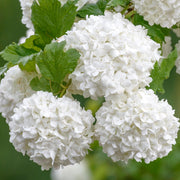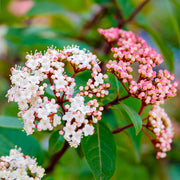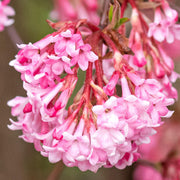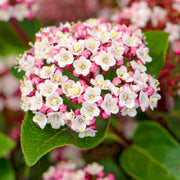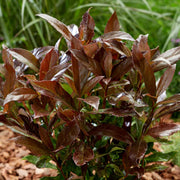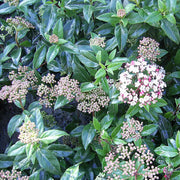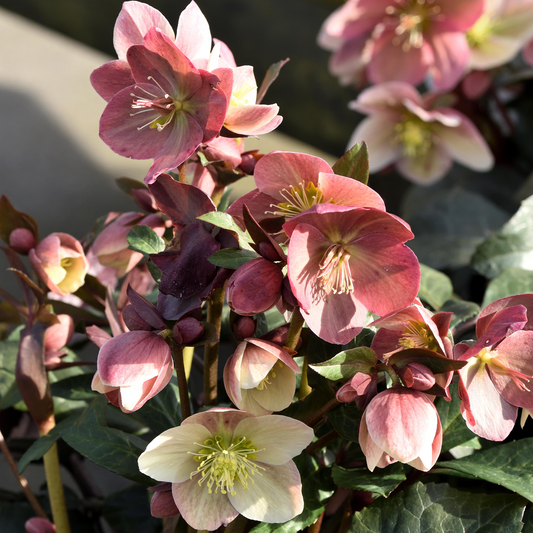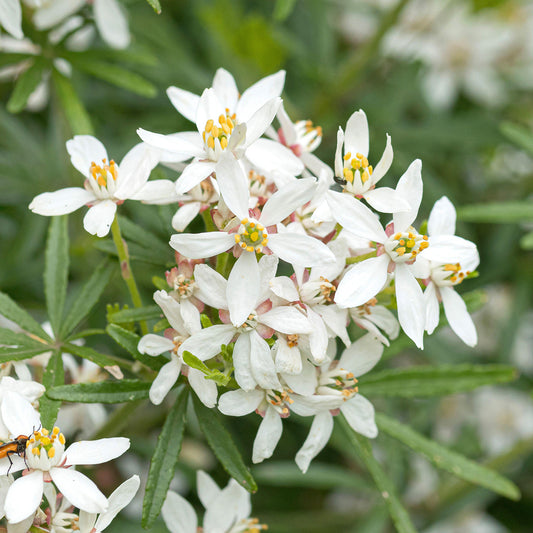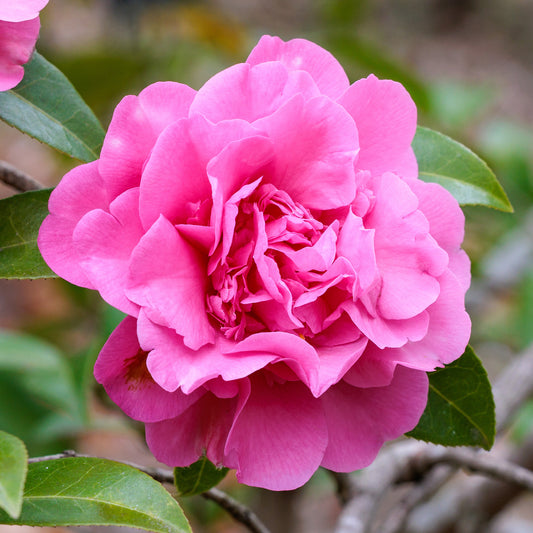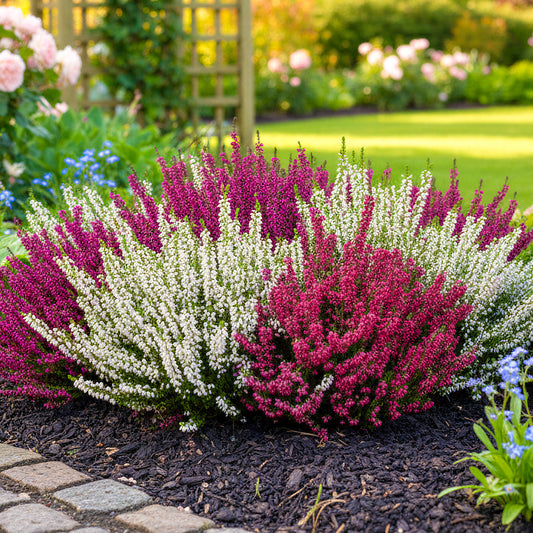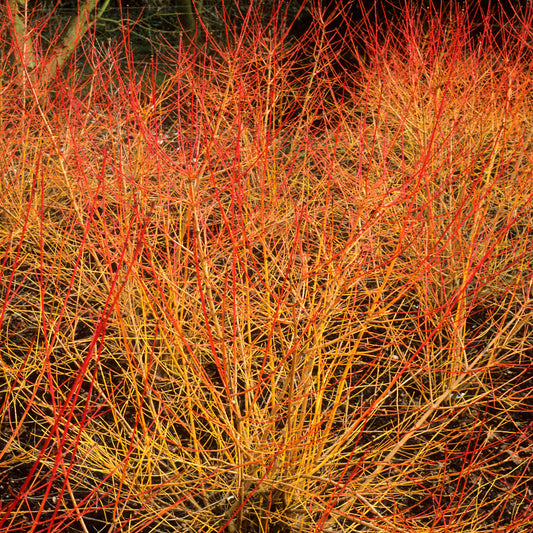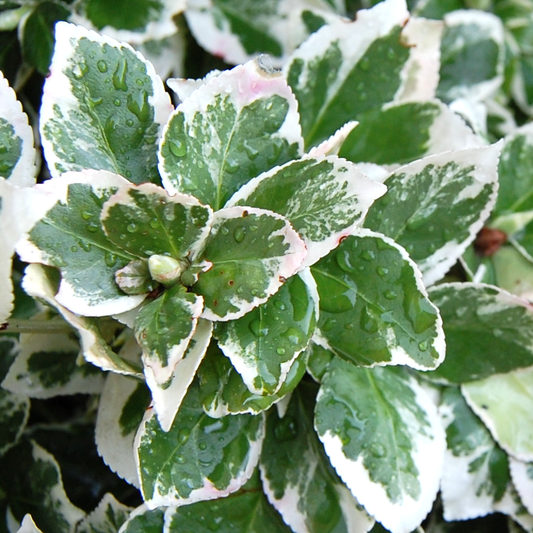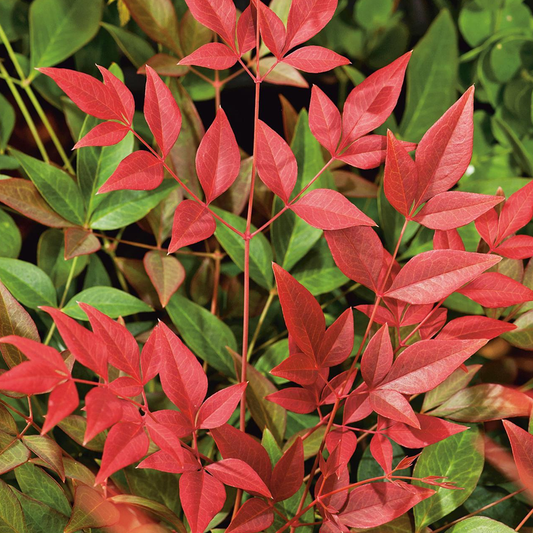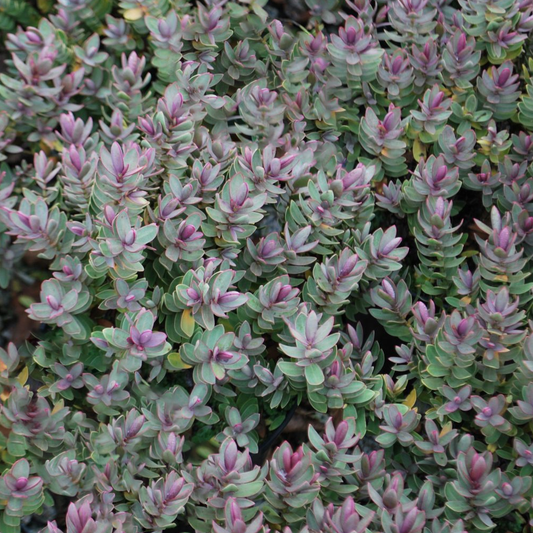Product description
Viburnum are upright, multi-stemmed shrubs that mature into a small tree. Bodnantense Dawn is an excellent Viburnum with sweet scented flowers and foliage that carries multi-seasonal interest.
This beautiful winter flowering plant boasts dense clusters of deliciously perfumed flowers on bare stems from November to March. It creates a spectacular display of colours that will stun any garden visitor.
Viburnum Dawn carries a long multi-seasonal interest that makes it a recommended plant in winter gardens. It produces dense clusters of fragrant tubular flowers, white and pink in colour, on woody stems. It can bloom early if the winters are milder. Ovate leaves with bronze tint in spring will enrich the plant and shows brilliant shades of burgundy-red in autumn. Its flowers will give way to purple round berries that will mature to black in autumn but are toxic if eaten.
Viburnum Dawn is straightforward in growth. Plant it in full sun or partial shade in a moderately fertile soil that is regularly drained. Water the young plants regularly until they establish but avoid clogging of the soil. Viburnum will brighten up your garden in the darkest of winter.
These are hardy winter shrubs that will sustain winter frost. Add a generous mulch of well-rotted garden compost around the base to retain moisture in summer. Viburnum will bloom more impressively when planted in full sun.
Where does Viburnum find its place in the garden? Of course, near the entrance or walking paths, where you can enjoy the sweet fragrance of its flowers. Use them as tall hedges outdoors or in large containers for indoor use. Viburnum Dawn is ideal for cottage gardens, scented gardens and cut flower gardens.
Garden Plant Size Guide

Plants in larger pots can be multiple years older than their smaller counterparts with more mature root systems and foliage. This makes them able to thrive as a full size plant in your garden quicker than smaller alternatives.
The most common size of pot that garden plants come in are 9cm/1L/3L/5L this is in reference to the diameter at the top of the pot.
9cm potted plants still remain the most popular cost effective option though, they just may take a little patience to allow them to grow into full maturity once planted in your garden.
Plant specs, care guide & tips
Key features
When to plant
| Jan | Feb | Mar | Apr | May | Jun | Jul | Aug | Sep | Oct | Nov | Dec |
|---|---|---|---|---|---|---|---|---|---|---|---|
Planting and period of interest times are general guidelines and may vary based on your location and conditions. For best results, consult local gardening resources.
Instructions
Top Tip
Prune viburnum after flowering to maintain shape and encourage new growth. Remove dead or damaged branches to promote better air circulation and a healthier plant.
How to Water
Water viburnum deeply and regularly during the first growing season to establish roots. Once established, they’re drought-tolerant but benefit from occasional watering during dry spells. Avoid overwatering to prevent root rot.
How to Plant
Choose a sunny or partially shaded spot with well-draining, fertile soil. Dig a hole twice as wide and the same depth as the root ball. Place the plant, backfill with soil, and firm gently. Water thoroughly after planting and mulch to retain moisture. Space plants 120-180cm apart.







